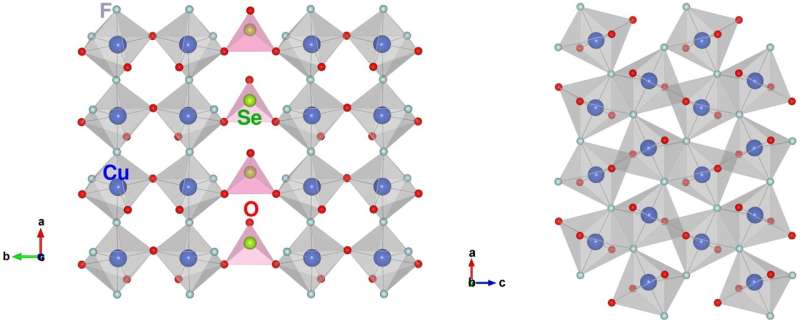Uncovering spin ladders in real chemical compounds

When fabricated in one or two dimensions, systems of particles whose quantum spins interact with each other can display some unique quantum properties. Through new research published in The European Physical Journal B, Asif Iqbal and Baidur Rahaman at Aliah University in Kolkata, India, have developed a new theoretical technique for calculating the structures and interactions taking place in these unique materials. Their approach could pave the way for advanced new superconductors—which allow electric currents to flow through them with zero resistance.
Acting as an intermediate between one- and two-dimensional systems, spin systems feature some unique quantum behaviors. They come in a variety of different types, among the most interesting of which are spin ladders. These are made up of 1D chains of particles whose quantum spins, individually named legs, are linked together by their quantum interactions—forming the ladder’s rungs. Crucially, spin ladders behave differently depending on whether their number of legs is odd or even.
Recently, physicists have discovered that superconductivity can be enhanced in spin ladders by carefully introducing impurities into their chemical structures. In their study, Iqbal and Rahaman drew from this research to study a material with the formula Cu2(SeO3)F2. This compound is a known antiferromagnetic spin ladder, meaning the spins of neighboring atoms in the ladder must alternately point in opposite directions.
The team’s calculations involved density functional theory: a method widely used in quantum mechanics to study electronic structures, based on the concept that a systems total energy can be linked to the distribution of its electrons. With this approach, Iqbal and Rahaman found that modeling the material from first principles could accurately reproduce its chemical and structural properties—showing how Cu2(SeO3)F2 behaves as a spin ladder with an even number of legs, with weak interactions between neighboring spins.
The researchers hope their approach could help others develop advanced new superconductors more easily, potentially leading to advances in cutting-edge areas of research including quantum computing.
More information:
Asif Iqbal et al, Electronic structure and microscopic model of Cu2(SeO3)F2: a 2-D AFM ladder compound, The European Physical Journal B (2023). DOI: 10.1140/epjb/s10051-023-00514-1
Citation:
Uncovering spin ladders in real chemical compounds (2023, July 14)
retrieved 15 July 2023
from https://phys.org/news/2023-07-uncovering-ladders-real-chemical-compounds.html
This document is subject to copyright. Apart from any fair dealing for the purpose of private study or research, no
part may be reproduced without the written permission. The content is provided for information purposes only.
For all the latest Science News Click Here
For the latest news and updates, follow us on Google News.

